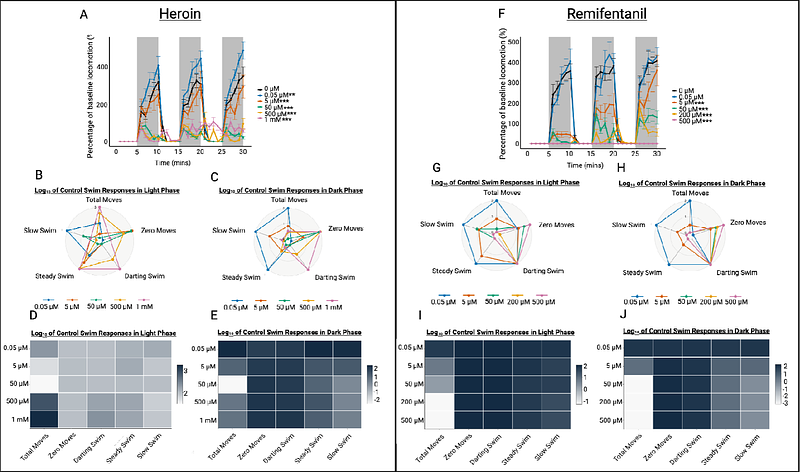Neural and Behavioral Dynamics of Acute Fentanyl Administration and Implications for Hazard Assessment of Novel Synthetic Opioids in Larval Zebrafish

Neural and Behavioral Dynamics of Acute Fentanyl Administration and Implications for Hazard Assessment of Novel Synthetic Opioids in Larval Zebrafish
Hillman, C. S.; Kearn, J.; Wasser-Bennett, G.; Trznadel, M.; Winter, M. J.; Parker, M. O.
AbstractSynthetic opioids pose a significant public health risk due to their rapid synthesis and potentially lethal potency. New compounds are emerging continuously, meaning current testing platforms struggle to keep pace. Consequently, there is a critical need for simple, rapid, translatable models to provide a scalable screening platform to identify and hazard-assess emerging synthetic opioids, and test potential intervention strategies. Here, we exposed 4 days post-fertilization (dpf) larval zebrafish to a range of concentrations of the prototypical class representative, fentanyl, to investigate behavioral and neural responses. Fentanyl caused low concentration hyperactivity, and high concentration hypolocomotion (sedation) which was reversed by the opioid antagonist naloxone. We confirmed predictive validity by replicating the behavioral responses with other class representatives (diacetylmorphine [heroin] and remifentanil). We also confirmed, pharmacologically, that low concentration hyperlocomotion was mediated by dopamine D2 receptors, replicating effects observed in mammals. Further mechanistic investigation using whole-brain in vivo imaging revealed disrupted connectivity in opioid-related circuits, such as the habenulae and dorsal thalamus, alongside novel pathways, including circuits associated with the pineal gland, torus semicircularis and eminentia granularis, potentially highlighting previously uncharacterized sensory and cerebellar neuronal networks. These findings support the use of the larval zebrafish as a scalable model for assessment of synthetic opioids to provide novel insights into opioid-induced behaviors and mechanisms of action that may aid strategies in the growing challenge of interventive treatments for synthetic opioid intoxication.